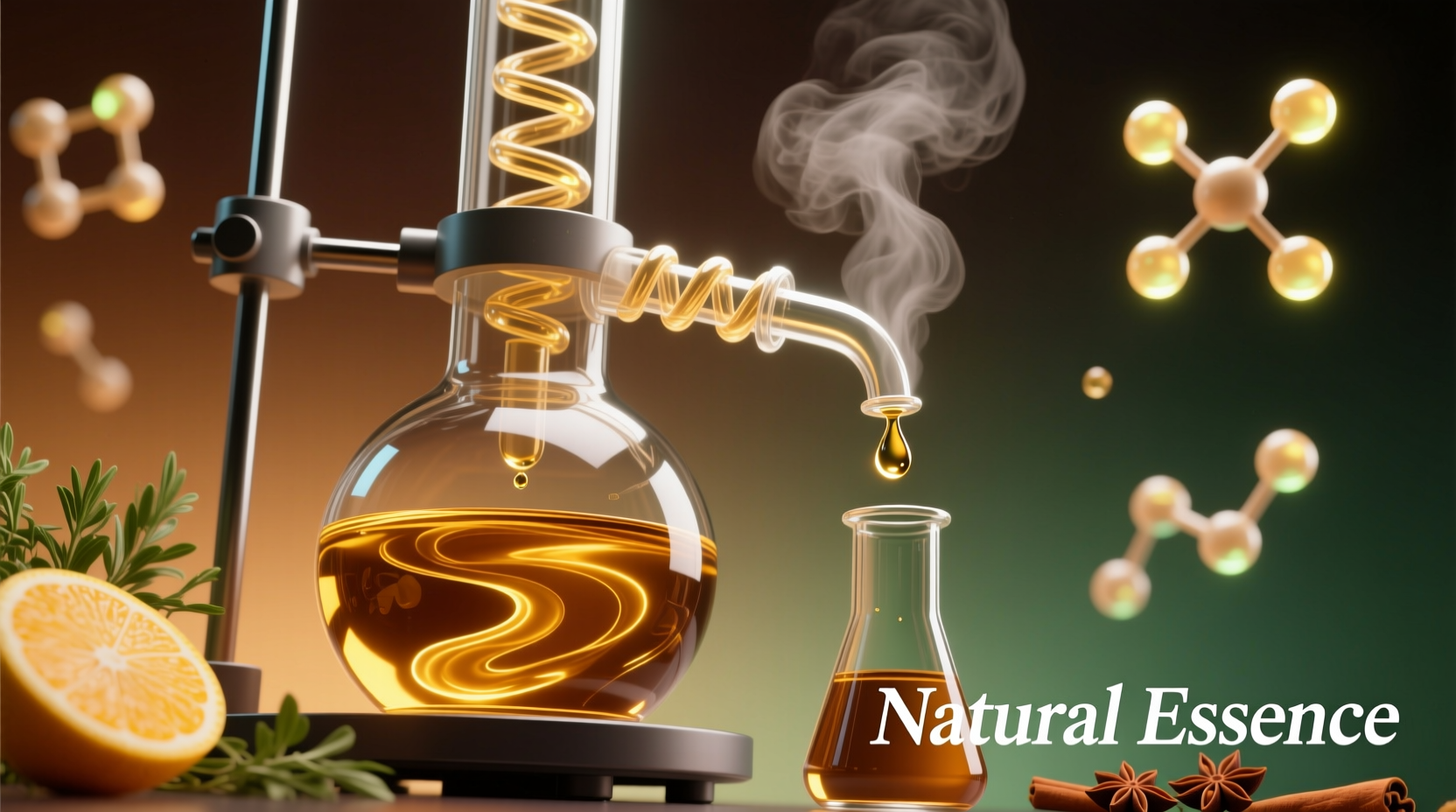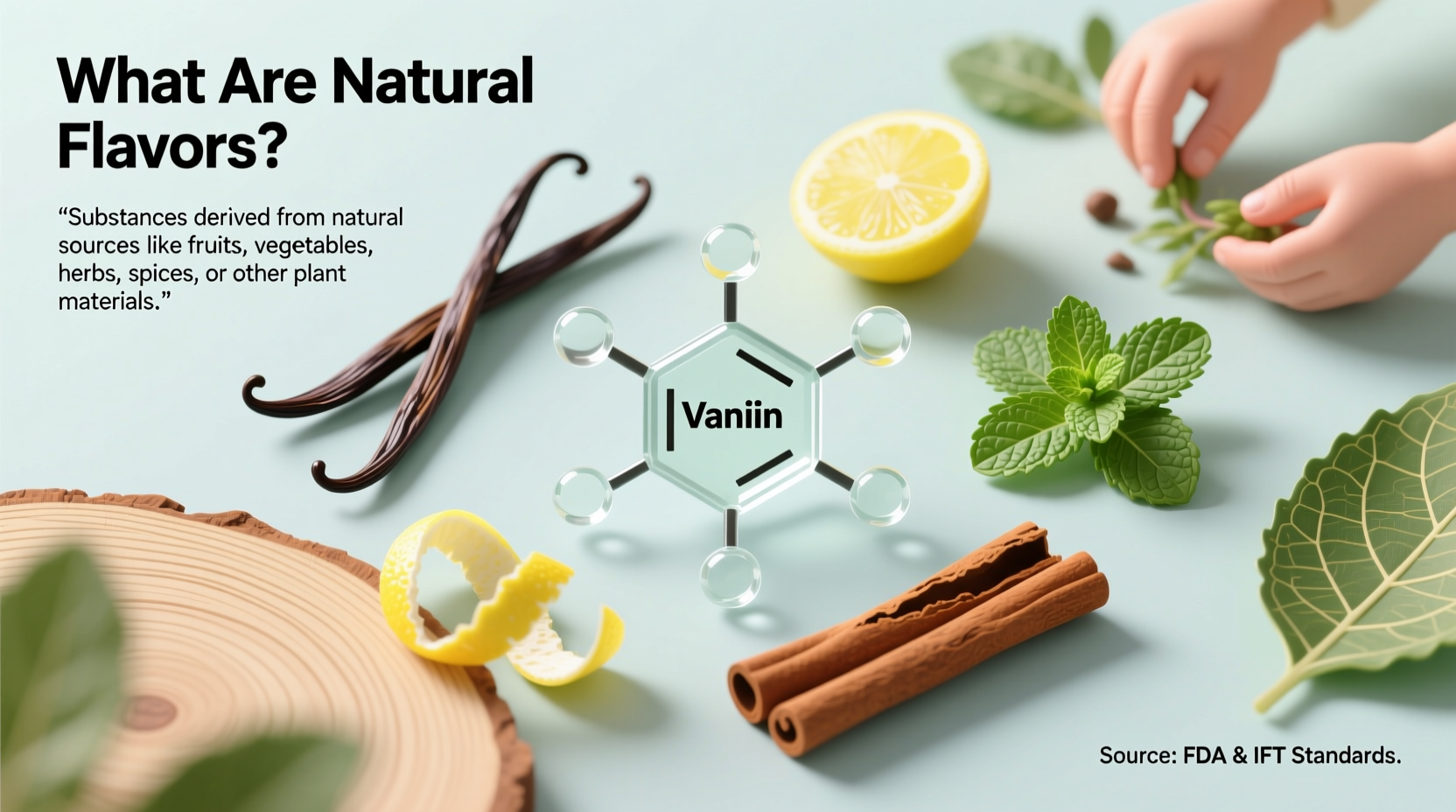Navigating food labels can feel like deciphering a secret code, especially when you encounter the term "natural flavors." This ubiquitous phrase appears in everything from your morning cereal to afternoon snacks, yet few consumers understand exactly what it means. In this comprehensive guide, you'll discover the scientific, regulatory, and practical aspects of natural flavors—empowering you to make more informed decisions about what you're really consuming.
Demystifying Natural Flavors: Beyond the Label Mystery
When you see "natural flavors" on a food label, you're looking at one of the most misunderstood terms in modern food production. Contrary to what many believe, natural flavors aren't simply pure extracts of the named ingredient. They represent complex flavor systems created through sophisticated food science that can contain dozens of individual components—all legally qualifying as "natural" under current regulations.
The U.S. Food and Drug Administration (FDA) provides the official definition that forms the basis for labeling across North America. According to FDA guidelines, natural flavors must originate from natural sources but can undergo extensive processing to isolate and concentrate specific taste compounds. This processing allows food manufacturers to create consistent flavor profiles regardless of seasonal variations in raw ingredients.

How Natural Flavors Are Actually Made
The creation of natural flavors involves advanced food science techniques that transform raw ingredients into concentrated flavor systems. Food chemists use various extraction methods including:
- Steam distillation - capturing volatile compounds from herbs and spices
- Solvent extraction - using food-grade solvents to isolate flavor molecules
- Enzymatic processes - breaking down ingredients to release specific flavor compounds
- Fermentation - using microorganisms to create complex flavor profiles
These processes allow manufacturers to extract only the specific molecules responsible for desired flavors while eliminating unwanted elements like color, texture, or impurities. For example, natural strawberry flavor doesn't contain actual strawberry pulp but rather the key aromatic compounds that create strawberry's distinctive taste profile.
Natural vs. Artificial Flavors: Clearing Up Confusion
One of the most persistent misconceptions is that natural flavors are inherently healthier or safer than artificial flavors. The reality is more nuanced. Both types undergo significant processing, and safety depends on the specific compounds used rather than their origin.
| Characteristic | Natural Flavors | Artificial Flavors |
|---|---|---|
| Source | Plant or animal materials | Synthetic chemical compounds |
| Processing Level | Extensive extraction and concentration | Chemical synthesis in laboratories |
| Complexity | Often contain multiple components (10-50+) | Typically single compound or simple blend |
| Cost | Generally more expensive | Generally less expensive |
| Regulatory Approval | GRAS status required | GRAS status required |
Both natural and artificial flavors must meet the FDA's Generally Recognized As Safe (GRAS) standard before use in food products. The primary difference lies in their origin rather than their safety profile. In some cases, natural flavors may contain more components than their artificial counterparts, potentially increasing the risk of unexpected reactions for sensitive individuals.
Why Food Manufacturers Rely on Natural Flavors
Food producers have compelling reasons to use natural flavors rather than listing specific ingredients:
- Supply chain stability - Natural flavors provide consistent taste regardless of seasonal variations or crop failures
- Cost efficiency - Concentrated flavors require smaller quantities than whole ingredients
- Technical functionality - They perform better in processed foods than raw ingredients
- Intellectual property protection - The exact composition remains proprietary
Consider orange flavor in a beverage. Using actual orange juice would create consistency challenges due to varying harvest conditions, require refrigeration, and introduce sugars and calories. Natural orange flavor delivers the characteristic taste without these complications, allowing manufacturers to control sweetness and texture independently.
Transparency Challenges in Natural Flavor Labeling
Current regulations create significant transparency limitations for consumers. The USDA's Food Safety and Inspection Service permits manufacturers to group dozens of individual components under the single term "natural flavors" without disclosure. This practice creates several challenges:
- Allergen concerns - hidden ingredients may trigger reactions
- Dietary restriction issues - animal-derived components in vegetarian products
- Religious dietary compliance questions
- Lack of information about processing aids used
For individuals with specific dietary needs, this lack of transparency can create real challenges. Those following kosher or halal diets, managing allergies, or adhering to strict vegetarian or vegan lifestyles may find it difficult to determine if products containing "natural flavors" meet their requirements.
Practical Guidance for Consumers
While complete transparency remains limited, you can take these actionable steps to navigate natural flavors more effectively:
Contact Manufacturers Directly
Many companies will disclose additional information upon request. Ask specific questions about:
- Whether animal products are used in vegetarian/vegan items
- Potential allergen cross-contamination risks
- Whether the flavors contain common allergens like soy or dairy derivatives
Look for Third-Party Certifications
Certifications like Non-GMO Project Verified, USDA Organic, or specific dietary certifications often impose stricter requirements than baseline regulations. The Organic Trade Association requires that organic-certified products use only natural flavoring substances derived from organic sources.
Understand Regional Differences
Labeling standards vary internationally. The European Union requires more specific labeling of natural flavors, often identifying the source (e.g., "natural strawberry flavor"). In contrast, U.S. regulations allow the generic "natural flavors" designation regardless of source.
What Science Says About Natural Flavor Safety
According to comprehensive reviews by the FDA's Center for Food Safety and Applied Nutrition, both natural and artificial flavors approved for food use are considered safe at typical consumption levels. However, researchers note that:
- Individual components may have different safety profiles than the whole extract
- Processing methods can create new compounds not present in the original source
- Long-term effects of chronic low-level exposure to flavor compounds remain understudied
The National Academies of Sciences, Engineering, and Medicine has called for more research on the cumulative effects of flavor compounds, particularly for children whose developing systems may respond differently to these substances.
Making Informed Choices About Natural Flavors
Understanding natural flavors empowers you to make choices aligned with your dietary preferences and health goals. While they aren't inherently problematic, the lack of transparency means you'll need to be proactive if you have specific dietary requirements. For most consumers, natural flavors represent a safe and effective way to enjoy consistent taste experiences in processed foods—but knowledge of what's behind that label gives you greater control over your food choices.











 浙公网安备
33010002000092号
浙公网安备
33010002000092号 浙B2-20120091-4
浙B2-20120091-4